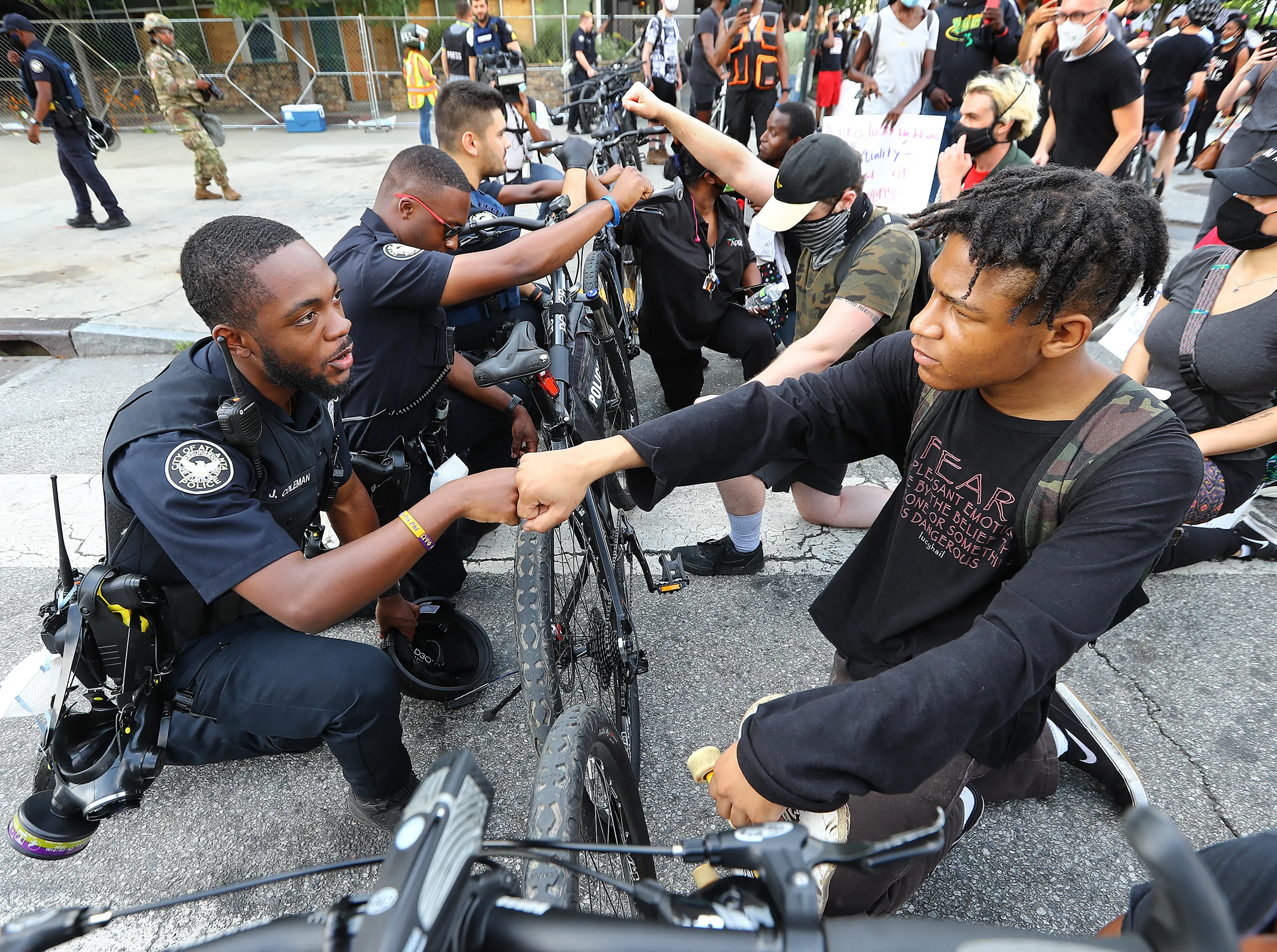Public Information Officers (PIOs) are critical in managing
communications during protests, particularly when faced with an angry or
agitated crowd. Effective messaging is vital to de-escalating tensions,
ensuring public safety, and preserving the integrity of public institutions. In
this article, we'll explore several techniques PIOs can employ to deliver
messages that defuse anger, build trust, and contribute to a more constructive
and peaceful environment.
Calm and Clear Communication
Maintaining a calm and clear communication style is
paramount when addressing an angry mob. PIOs should speak in a measured and
reassuring tone, avoiding confrontational language. Clear communication helps
convey the message more effectively and minimizes the risk of misinterpretation
or further escalation.
Acknowledge and Validate Emotions
Acknowledging the emotions of the crowd is a crucial step in
effective communication. PIOs should recognize the concerns and frustrations of
the protesters, demonstrating empathy and understanding. Validating their
emotions helps build a bridge of trust and shows that the authorities are
receptive to the community's grievances.
Transparency and Information Sharing
Transparency is a cornerstone of effective crisis
communication. PIOs should provide accurate and timely information about the
situation, addressing the concerns that may have led to the protest. Sharing
relevant facts helps dispel rumors and misinformation, fostering a sense of
trust between the public and law enforcement.
Empathetic Messaging
Empathy is a powerful tool in diffusing tension. PIOs should
express genuine empathy for the community's concerns, demonstrating a shared
commitment to addressing issues collaboratively. This humanizes the
communication process and helps build a connection between the authorities and
the protesters.
Focus on Common Ground
Identifying common ground between the public and law
enforcement can be a unifying strategy. PIOs should emphasize shared goals,
values, or aspirations, redirecting the conversation toward areas of agreement.
Finding common ground can help build bridges and create a more cooperative
atmosphere.
Call for Dialogue and Collaboration
Encouraging open dialogue and collaboration is crucial in
defusing tensions. PIOs can invite community leaders, activists, or
representatives for a constructive conversation. PIOs are committed to
resolving issues and fostering positive change by demonstrating a willingness
to engage in meaningful dialogue.
Use Non-Confrontational Language
The choice of language is pivotal in de-escalation efforts.
PIOs should use non-confrontational and non-inflammatory language to avoid
escalating emotions further. Words matter, and selecting phrases that promote
understanding and cooperation can significantly impact the overall atmosphere
of the protest. Some examples of phrases to use include:
Acknowledging Emotions:
·
"We understand that emotions are running
high, and we hear your concerns."
·
"We recognize the frustration and anger
that many in the community are feeling right now.”
Expressing Empathy:
·
"We
empathize with the challenges you're facing, and we are committed to finding
solutions together."
·
"Your
voices are important, and we are here to listen and work towards positive
change."
Encouraging Dialogue:
·
"We invite community leaders to engage in
a constructive dialogue to address the concerns raised."
·
"Let's
work together to find common ground and solutions that benefit everyone."
Non-Blaming Language:
·
"We
want to understand the root causes of the issues you're highlighting without
placing blame."
·
"Our focus is on moving forward
collaboratively rather than dwelling on past grievances."
Offer Solutions and Commitments
Providing concrete solutions and commitments demonstrates a
proactive approach to addressing community concerns. PIOs should outline steps
the organization is taking to address issues raised during the protest,
showcasing a commitment to positive change. Tangible actions speak louder than
words and help rebuild trust.
Utilize Social Media for Real-Time Updates
In today's digital age, social media is a powerful
communication tool during protests. PIOs can use platforms like Twitter and
Facebook to provide real-time updates, share accurate information, and address
concerns directly. Social media enables a rapid and widespread dissemination of
information, helping to manage the narrative effectively.
Engage Community Leaders as Intermediaries
Engaging trusted community leaders or influencers as
intermediaries can help establish a bridge between law enforcement and the
protesters. PIOs can collaborate with community figures who have credibility
and influence, allowing for a more effective exchange of information and
promoting a sense of community involvement.
Deploy Trained Negotiators
In situations where tensions are high, deploying trained
negotiators can be instrumental. These professionals are skilled in
de-escalation techniques and can work to establish open lines of communication
between the authorities and the protesters. PIOs can communicate the presence
of negotiators to the crowd to reassure them of a commitment to a peaceful
resolution.
Monitor and Respond to Emotions
Understanding the emotional dynamics of the crowd is
essential. PIOs should be attuned to shifts in mood and respond accordingly. If
the atmosphere becomes more charged, adjusting messaging to address heightened
emotions and reiterating the commitment to resolving issues peacefully is
crucial.
PIOs facing an angry mob during protests have a challenging
yet crucial role in maintaining order and facilitating constructive
communication. By employing these messaging techniques – from calm and clear
communication to acknowledging emotions, fostering transparency, and engaging
with community leaders – PIOs can contribute to de-escalation efforts and help
create an environment conducive to positive change. Effectively navigating
these challenging situations requires strategic communication, empathy, and a
genuine commitment to addressing community concerns. Ultimately, the goal is to
manage the immediate problem and build a foundation for ongoing dialogue,
understanding, and collaboration between public safety organizations and the
communities they serve.

Comments
Post a Comment